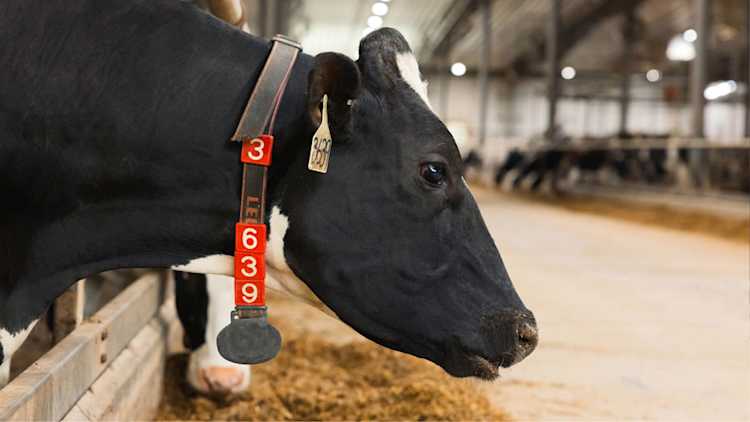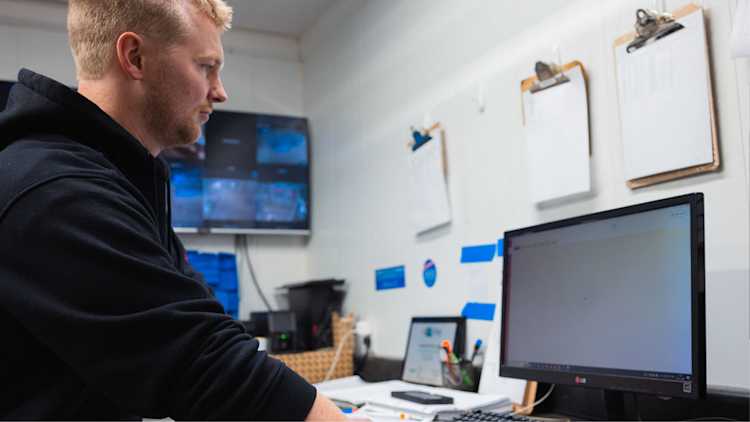The transformative power of on-farm technology

Halarda Farms Ltd., located in Elm Creek, Man., is advancing their business with innovative ideas, leveraging the latest technology and ensuring sustainability for future generations. As one of the province’s largest dairy farms now utilizing robotic milking units, the Borst family behind the business isn’t shy about taking on new challenges.
Halarda Farms continues to evolve, seizing new opportunities and consistently planning for the future.Initially acquired by Anton Borst’s parents, who emigrated from Holland with their five children in 1984, the farm has grown significantly from its early days of milking 80 cows. Today, it’s a multi-generational enterprise poised to continue growing. “In 2013, my wife, Cheryl, and I officially took it over,” Borst says. “And as of 2023, my son and his wife became partners in the farm.”
With the next generation now on board, Halarda Farms continues to evolve, seizing new opportunities and consistently planning for the future. This forward-thinking approach keeps the farm at the forefront of agricultural innovation.
The journey to robotics
By 2007, Halarda Farms was milking about 635 cows in a double-ten parlour. A new milking parlour was needed, and it became apparent that a system change was necessary to keep up with growth. Robotics, though, were not initially part of their plan. “We were skeptical because the common advice was that robotic milking was for smaller farms with 60 to 100 cows, not for larger farms,” Borst says.
However, after touring a robotic milking facility, the Borsts were intrigued by the system’s potential. It provided extensive information for herd management and addressed a looming issue: labour. “We were running 24-hour shifts, which was tough. I didn’t want to impose those shifts on myself or my kids, who were very young. We also didn’t think we could sustain hiring people for those shifts,” Borst says.
Realizing the benefits, the Borsts decided to embrace robotic milking.
Technological integration
Halarda Farms now uses Lely robotic milking systems to optimize operations. Their 1,300 milking cows now wear computerized collars that monitor various aspects of their movement, nutrition and health, offering the family a wealth of data and a more streamlined management system. Cows are sorted and, when necessary, separated automatically into pens for health concerns or routine tasks such as hoof trimming and vaccinations.
“Some of the biggest improvements are that the cows can operate on their schedule. We got a nice production increase, partly due to higher milking frequency,” Borst says.
“Cow comfort improved significantly, which also contributed to the production increase,” he says. “Additionally, the information we get from the robots and activity collars makes managing the herd much easier.”
The system enables the Borst family to fully harness their management potential and drive growth without overextending their resources or capabilities.
Looking ahead
With family as the cornerstone of their business plans, the Borsts actively seek opportunities for the next generation to take the reins and feel deeply invested in the enterprise. This forward-thinking approach is a crucial part of their strategy to ensure that the farm is well-prepared for future generations.
By fostering an environment that encourages innovation and long-term planning, the family is setting the stage for future resilience. “For bigger decisions, we involve all ownership partners to set priorities and make sure everyone understands why those priorities are set,” Borst says. “The earlier you start, the easier it is for the next generation to be invested in the operation.”
Flexibility is key, he adds. The business now has provisions to accommodate more partners based on the interests of their nine children. “We’ve set up mechanisms to bring more partners into the farm, depending on how many of our nine kids want to be involved,” he says.
“Our goal is to pass the farm on to the next generation, making sure it’s sustainable,” he says.
Technological sustainability means shifting roles
Integrating technology into a farm operation means a shift in daily management tasks and employee roles. During the time of startup, Borst says, it’s important to block some time at the beginning or end of each day to evaluate how the implementation is going.
Check in regularly with the farm team to ensure they’re learning the necessary skills and that animals are adjusting.
Considerations when optimizing team roles:
Shift from manual to technological tasks. Some manual labour will be replaced with technical roles requiring knowledge and skills in operating and troubleshooting the equipment. Training and skill development will be required.
Enhanced focus on data analysis. Employee roles will shift towards analyzing the data collected to ensure optimal animal health and welfare and productivity.
Farm management and strategy. With more data available, you’ll be able to make more informed decisions about herd management, feed strategies and overall farm operations.
Efficiency optimization. There will be opportunities to optimize the use of robotic systems for improved efficiency and productivity.
Supplier liaison. Regular communication with equipment suppliers and service providers becomes essential to ensure the robotic systems are functioning optimally.
New farm routines. The continuous operation of robotic systems may require more flexible work schedules for employees since systems can run around the clock.
Growing with the times
Embracing innovation
Integrating advanced technologies can boost efficiency and productivity. Halarda Farms’ robotic milking systems show how technology can streamline processes, reduce labour and enhance management strategies.

Exploring new technologies tailored to your specific needs can allow for greater growth. “Investigate thoroughly to ensure the technology fits your operation,” Borst says. Building in the time to make the transition is also key. “Make sure someone on the farm has enough time to manage the implementation process without getting bogged down.”
Effective management
Structured, well-planned management practices are key to any farm’s success. “When it comes to preparing for a project like that, you have to make time to visit other farms and consider all the options,” Borst says. “Prepare budgets and cashflows. This process will often take well over a year and includes applying for permits.”
The Borsts’ management approach, using data-driven decisions and automation, highlights the value of priority-based oversight. Clear systems and processes help efficiently manage routine tasks and unexpected challenges. “The technology allows us to do a much better job of applying the same old principles,” Borst says.
Strengthening operations
Focusing on family and future opportunities creates a resilient farming operation. “Having a clear and transparent transition plan helps ensure that the next generation knows the transition is real and can plan accordingly,” Borst says.
From an AgriSuccess article by Emily Leeson.
